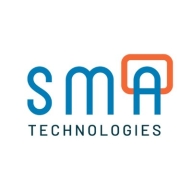


VisualCron and Microsoft Power Automate both compete in the automation and integration category, with notable strengths in various areas. Based on the comparison, VisualCron seems to have the upper hand in flexibility and customization, while Microsoft Power Automate shines in integration within the Microsoft ecosystem and ease of use due to its low-code environment.
Features: VisualCron's strengths include flexibility in handling nightly sync tasks, the ability to use job variables for customized templates, and process-specific logging. It offers intuitive scheduling for complex workflows and an alerting feature for error notifications. Microsoft Power Automate features seamless integration with Microsoft tools, out-of-the-box connectors, and minimal coding requirements. It provides an easy-to-use interface, a vast array of templates, and significant AI and third-party application integration.
Room for Improvement: VisualCron could improve its error handling and audit logs while enhancing user account management, community support, and UI. It also needs to bolster its documentation and security features. Microsoft Power Automate, on the other hand, needs to advance its AI capabilities, improve error handling and Excel integration, and simplify its licensing. Users also desire better documentation and more training resources.
Ease of Deployment and Customer Service: VisualCron supports on-premises and hybrid cloud environments, offering deployment flexibility. Its customer support is generally quick and competent, although some users experience slow responses. Microsoft Power Automate provides versatile deployment options across public, private, and hybrid clouds, benefiting from a strong Microsoft support infrastructure. However, it could improve community interaction and the availability of support.
Pricing and ROI: VisualCron is praised for its fair and competitive pricing, supporting multiple instances that boost processing capabilities, with a high ROI due to reduced manual tasks. Microsoft Power Automate is cost-effective, particularly with its integration into Microsoft Office 365. Though licensing can be complex, its pay-for-use model and bundled free features enhance affordability. Its high ROI is attributed to its efficient integration capabilities within Microsoft tools.
| Product | Market Share (%) |
|---|---|
| Microsoft Power Automate | 17.3% |
| Automate | 2.0% |
| VisualCron | 1.0% |
| Other | 79.7% |



| Company Size | Count |
|---|---|
| Small Business | 18 |
| Midsize Enterprise | 7 |
| Large Enterprise | 4 |
| Company Size | Count |
|---|---|
| Small Business | 50 |
| Midsize Enterprise | 17 |
| Large Enterprise | 65 |
| Company Size | Count |
|---|---|
| Small Business | 5 |
| Midsize Enterprise | 1 |
| Large Enterprise | 5 |
Automate offers a user-friendly solution with a drag-and-drop interface for efficient task automation and integration with major platforms like SAP and Azure, making it ideal for quick deployment with minimal coding and training.
Automate provides powerful features for businesses seeking efficient automation, offering compatibility with databases, email integration, and cloud platforms. Its simple interface supports both beginners and experienced users, simplifying tasks like invoice processing, HR automation, and data transformation. Cost-effective pricing and flexible licensing enhance its appeal while integration capabilities and scheduling tools ensure smooth workflow automation.
What are Automate's Key Features?In industries such as healthcare, banking, and logistics, Automate is used for tasks like invoice payment automation, data transformation, and task automation. This leads to streamlined processes and reduced manual workload, illustrating its value in enhancing operational efficiency through diversified workflows.
Microsoft Power Automate is a powerful tool that streamlines and automates tasks within an organization.
It is used for workflow automation, data integration, and creating automated notifications and approvals.
Power Automate connects different applications and services, such as SharePoint, Excel, and Outlook, to automate data transfer and synchronization.
VisualCron offers task automation through a visual interface, eliminating the need for programming skills. With capabilities like alerting and variable usage, users benefit from integration with databases, timely task execution, and cross-platform operations.
VisualCron empowers users by simplifying complex workflows. It allows seamless task automation through features like interactive scheduling and role-based operations. Users appreciate its integration capabilities, replacing multiple tools with a comprehensive automation solution. The support system ensures quick assistance, making it a reliable choice for workflow visualization and task execution. However, areas like error handling and interface design require enhancements for improved user experience.
What are the key features of VisualCron?Organizations leverage VisualCron in industries like finance and logistics to automate tasks such as encryption and secure file transfers. It's also integral in managing data operations, facilitating communications between systems, and executing SQL jobs, enhancing operational efficiency across sectors.
We monitor all Robotic Process Automation (RPA) reviews to prevent fraudulent reviews and keep review quality high. We do not post reviews by company employees or direct competitors. We validate each review for authenticity via cross-reference with LinkedIn, and personal follow-up with the reviewer when necessary.